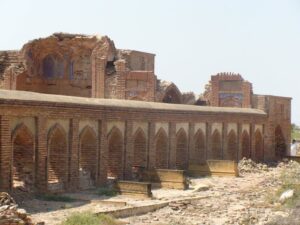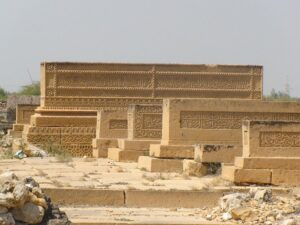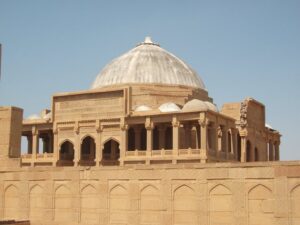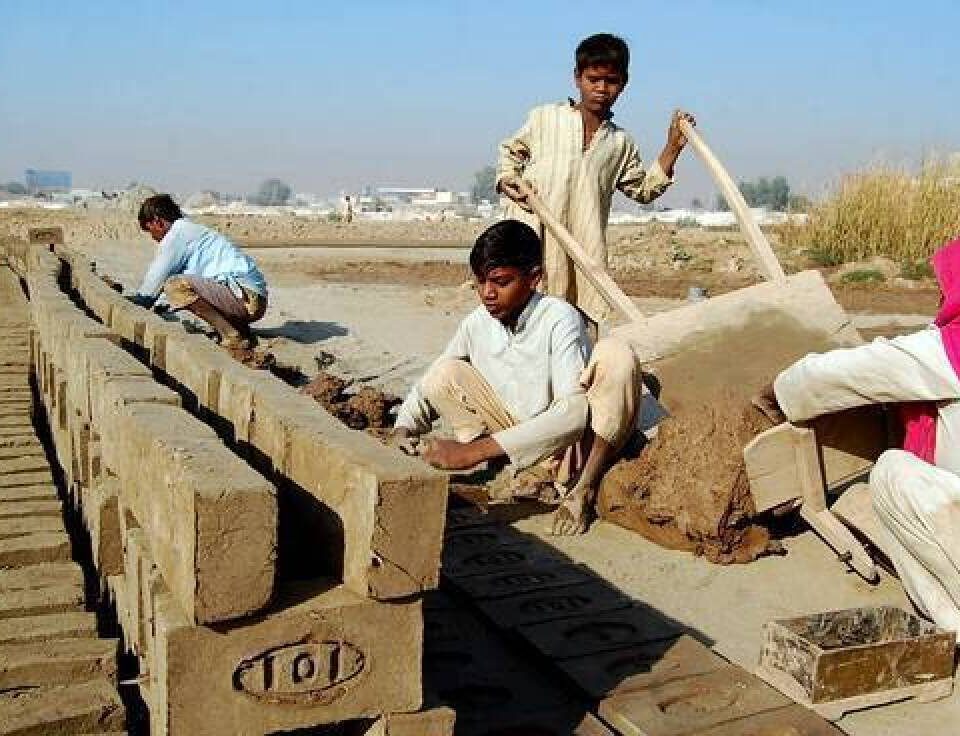Unveiling the Mystical Art Gallery of Time – The Makli

Struggles and Hopes – Women Laborers in Hyderabad’s Vegetable Market
December 21, 2023
Kot Diji Fort: A Majestic Journey Through History and Strategic Brilliance
December 28, 2023Unveiling the Mystical Art Gallery of Time – The Makli
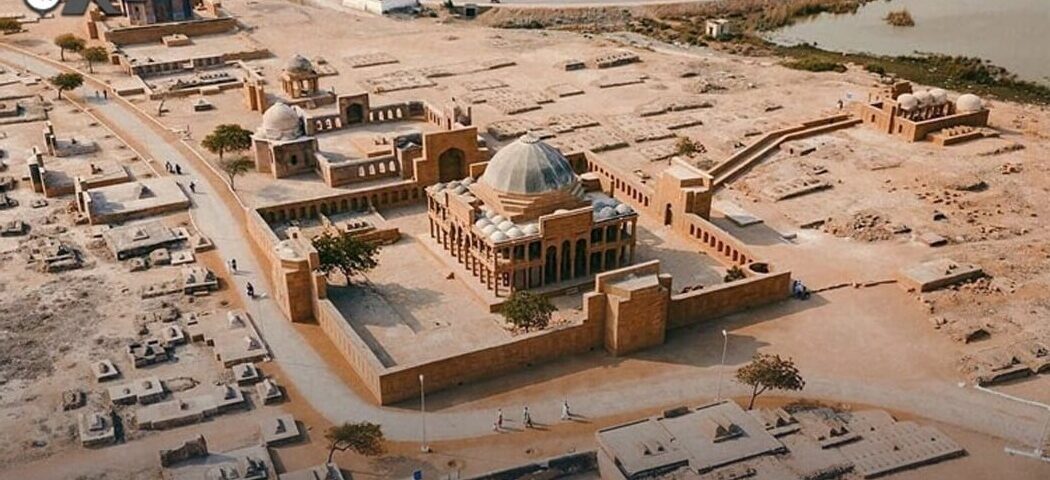
(Sajal Shaikh)
I decided to take a little adventure to Makli Graveyard in Thatta, not too far from Karachi—about 98 km, to be exact. And let me tell you, it’s not an ordinary graveyard; it’s like a magical art gallery that shouts out stories from the past. The kind of artwork you find here is like a special autograph from some super-talented artists on the ancient walls.
Now, let’s talk about the name—Makli. A local person told me that Makli word is driven from Makkah. Apparently, when the pilgrims go to perform hajj and stay here, they get a spiritual feel; that’s why they call it Makkah. After hearing this, a Sufi Saint Sheikh Hamad Jamali, came up with it. He said Makli sounds like “little Makkah.”
And get this, Makli isn’t just a graveyard; it’s a Khanqah (the building design for gathering Sufi neighbors) that was established by Sufi Saint Sheikh Hammad Jamali (r.a.), who is also buried here. Even the ruler, Jamtamashi, and other saints devotedly requested to be buried here. So, they all ended up buried here, turning Makli into the legendary graveyard.
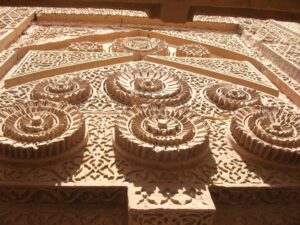
The sacred grounds of Makli hold the resting place of esteemed Sufi saints, including notable personalities such as Mai Makli, Sheikh Hammad Jamali (r.a), Abdullah Shah Ashabi (r.a), Syed Murad Shah Sherazi, and Makhdoom Muhammad Hashin Thattvi (r.a). Each of these revered figures has left an indelible mark on the spiritual landscape of Makli, contributing to the rich tapestry of its history.
Moreover, Makli Graveyard serves as the final abode for members of various dynasties, adding layers of historical significance to its hallowed grounds. The tombs within this sacred site encompass the remnants of the Mughal dynasty, the Samma dynasty, as well as the Argun and Tarkan dynasties. Each tomb echoes the stories of bygone eras.
Visiting the entire Makli Graveyard without a vehicle can be quite challenging as the site holds around 500,000 to 1 million tombs built over 400 years. Makli Hill’s necropolis is one of the biggest burial grounds globally, filled with graves, tombs, and mausoleums of various notable individuals like saints, poets, writers, noblemen, governors, ministers, princes, kings, and queens. Back in 1981, UNESCO recognized its significance by listing it as a heritage site. Within this vast expanse, you’ll find a whopping 125,000 graves of Sufi saints from various cultures and civilizations.
Now, picture this: 402 platforms, 75 tombs, and 2,000 graves have made it to the official map, and guess what? The work is still ongoing! Each grave and tomb has a unique story, crafted by local architects from Hindu, Persian, Central Asian, Gujarati, and Mughal backgrounds. Many tombs have been preserved to protect our heritage.
Amidst all these beautiful artwork-laden tombs, I suddenly came across a very simple tomb—Mai Makli’s. She was a pious woman whose prayers saved Thatta from the conquest of Sultan Feroz Shah Tughlaq, a ruler of the Tughlaq dynasty. Her grave is exceptionally modest, covered with green cloth.
One notable spot is Jan Baba’s tomb, situated around 100 meters east of his son Isa Khan Tarkhan II’s mausoleum—the genius behind both tombs. Jan Baba passed away in 1570 but wasn’t formally laid to rest until 1608 when his son could establish this final resting place. This remarkable structure, dating back to the Mughal period, stands as a testament to Mirza Isa Khan II’s architectural prowess. The tomb is a double-story marvel crafted from yellow limestone, adorned with the sophisticated artistry of Rajasthani Jodhpur aesthetics.
I also looked into the tough times of Baqi Baig Uzbak, a chief king defeated by Mughal King Akbar. He spent his later years in Thatta and passed away in 1440. His tomb, made with red and blue bricks, reflects that difficult period.
Among the many tombs, one caught my eye—the tomb of Jam Nizmudin, Sultan Jam Sadarudin’s son. It radiates peace with beautiful art and Arabic verses. It’s sturdy and well-preserved, a tribute to a leader who ruled for nearly 48 years.
Right next to Jam Nizamuddin’s tomb is where Jam Tamashi rests. He’s famous for a beautiful love story, meeting his wife, Noori Jamtamashi, at Kenjhar Jheel. His tomb is simple but lovely, echoing the charm of their timeless tale.
In 2010, heavy rainfall wreaked havoc on Makli Graveyard, almost bringing it to the brink of destruction. It felt like the last moments for this historical site. However, the Department of Cultural Heritage stepped in with a noble mission—to preserve Makli’s essence without erasing its genuine beauty and intricate artwork as these artistic treasures not only narrate the tales of the past but also stand as a testament to the enduring beauty and sophistication of the cultures they represent. Thus, in preserving Makli, we safeguard not just a graveyard but a living testament to the artistic legacy of bygone eras.



